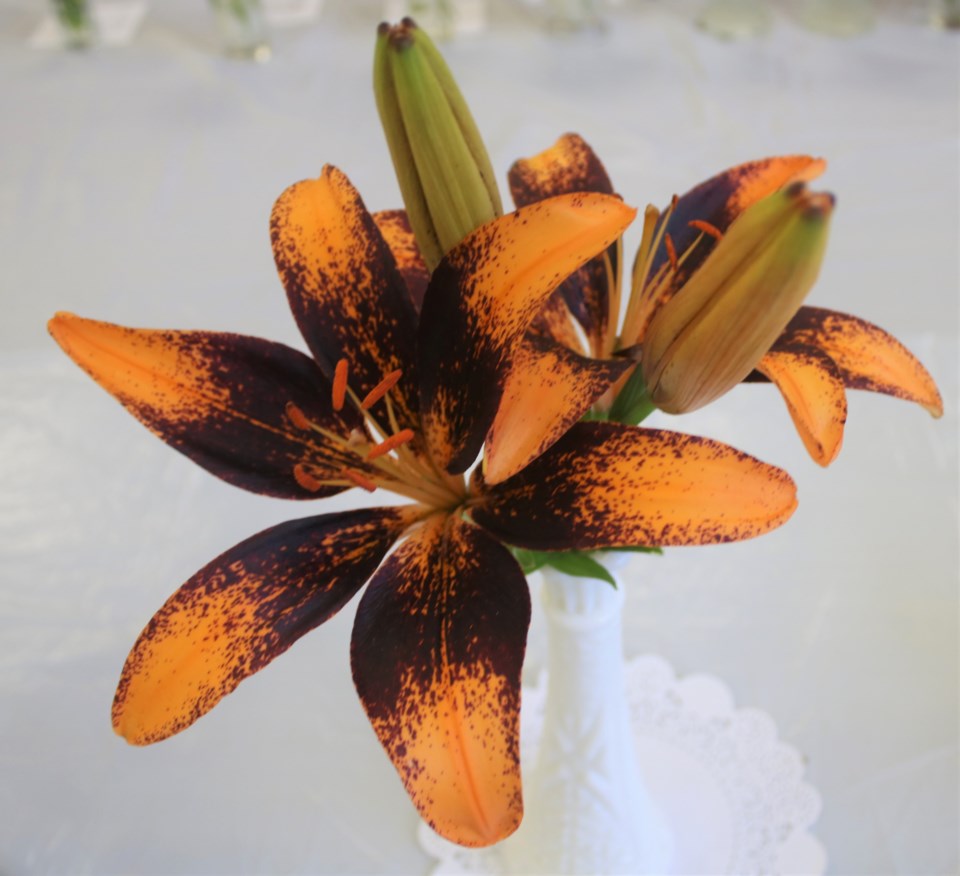YORKTON - Easter sings of new life and new hope…resurrection…and Easter images often show glorious spring flowers. We can only imagine that, considering how chilly it has been and how much snow still remains. But still, don’t we dream of those blooms!
Let’s have a cup of tea and talk about the main flower of Easter, and its significance. The Easter lily (lilium longiflorum) is the quintessential Easter plant: stately, regal, majestic with snow-white trumpet flowers, it is the plant that is shown in images of Jesus and Easter resurrection. An Easter legend says that the lilies were found in the Garden of Gethsemane after Jesus’ crucifixion. In the language of flowers, the lily’s pure white petals represent new beginnings, rebirth, and hope.
The plant originated in islands off the south of Japan, and in the late 1800’s when the bulbs began to arrive in the United States, they mostly came from Japan. During WWII, the movement of the bulbs stopped, but guess what? Everyone still wanted them, so growers took up the project in North America, and now about 95% of the Easter lily bulbs come from an area near the Oregon and California border.
And talk about timing! Commercial greenhouses plant the bulbs in pots and then comes the amazing part: by watching for leaf and bud development on the plants, the growers can monitor and adjust the temperature and humidity in their greenhouses so that the plants will bloom in time for Easter.
If we receive an Easter lily from the Easter Bunny, we should find a spot for it where it has bright but indirect light. The plant will enjoy a good watering, but does not want wet feet, so we shouldn’t let the planter sit in water. And as with any plant, if we want to try and get a second blooming, we must deadhead and remove the spent flowers. Curious and adventurous gardeners can plant the lily outside when all danger of frost is past: it would be an interesting experiment to see if it flowers again.
Now, here is the age old question: does removing the anthers ( the part of the plant that has the pollen) remove the powerful fragrance? It is good to remove the anthers because the pollen could cause a messy mishap if it falls on a nice tablecloth or we brush against it with our clothing. I have read that removing the anthers might also extend the life of the blooms. I say ‘might’ because I have read mixed opinions on this. As for the fragrance, removing the anthers is said to “control” the fragrance. I guess we are meant to draw our own conclusions whether the fragrance goes away completely or not!
Here’s an interesting factoid: lilies are either Asiatic, longiflorum (like our Easter lilies) or Oriental. Plant breeders are making great strides in fragrance-free lilies, but so far, the progress lies in the Asiatic lilies. Of the three, the oriental lilies have the strongest fragrance. Plant-lovers who have allergy conditions can easily choose other meaningful and beautiful Easter blooms instead, because there are many such as tulips (love and forgiveness), irises (wisdom and courage), hydrangeas ( understanding), or daisies (innocence).
Whatever flower your choose for Easter, it will be a sign of hope and new beginning and bring joy this chilly spring! The next meeting of the Yorkton hort society will be on Wednesday April 19 at 7PM at the Yorkton Public Library, and our speaker will be Frank Woloschuk.
Thank you to our friends at YTW for their fine work. Gardeners, Keith and I wish you a blessed and joyful Easter! Have a great week!





